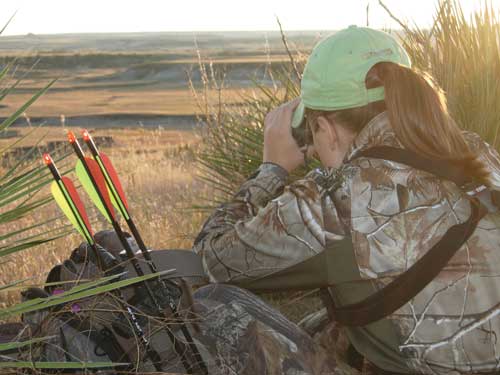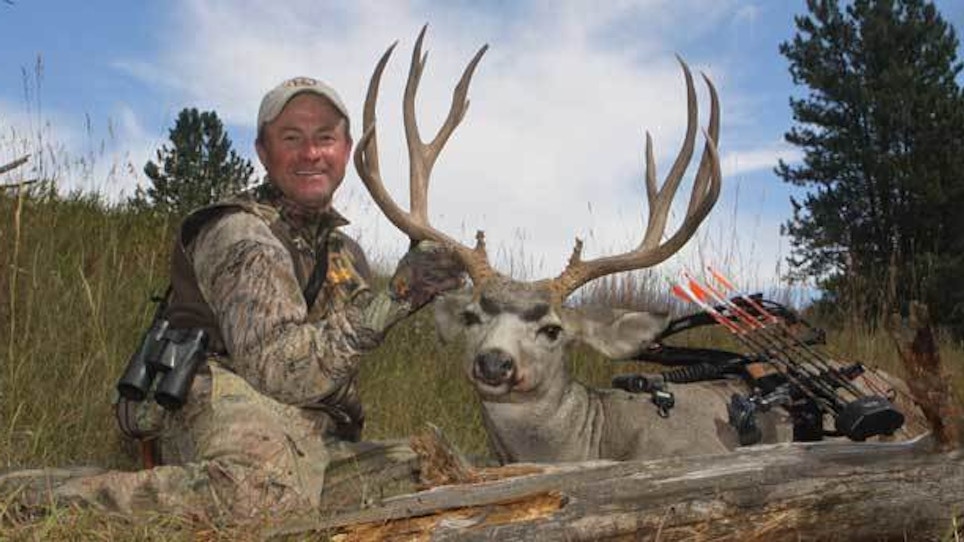 #1 Hunt The Shade
#1 Hunt The Shade
For spot & stalk hunts, your goal is to locate a muley bachelor group at sunrise and follow the bucks until they bed around midmorning. If you can't find a bachelor group, look for likely buck bedding locations. I look for rugged high country, then scrutinize every shady location I can find.
Scan shade from afar to avoid bumping bucks. Begin your hunt from county roads or ranch trails and slowly drive from location to location while peeking into every shady hole you encounter. I'll often stay a half-mile or more away and search with a sweep of my binoculars. If I see something suspicious, like a shiny object or a white swatch, I'll mount my spotting scope to the window and verify the sighting.
After spotting a group, note specific terrain features so you can find that location from another direction. Everything looks different from the backside, so take careful notes. Also try to determine how many bucks are there and their approximate locations. Why just approximate locations? Because by time you complete the stalk in, the deer probably will have moved.
Deer jockey around during the first hour as they clear stones from their bed and get comfortable. Then through the day they'll stretch, pee, and move with the sun to guarantee constant shade. If the day is cloudy, forget shade; stick with scanning rugged and high plateaus for cagey muley bucks.
#2 Treestands Work, Too
Though most Western hunters use blinds, there are plenty of trees, enough for hunters to add treestands to their arsenal of mule deer tactics.
In most instances, the same height you set them for whitetails will work for mule deer. If set up along a ledge or canyon, make sure the abrupt elevation change won't allow deer to look in your face if they pass by on a trail of equal elevation. If the trail is below, make sure the shot angle isn't too steep.
At field edges in early season, set your stand up on the side from which you expect muleys to arrive. Bucks often bed high in the adjoining breaks or hills and travel down to the fields in the evening. They'll reverse that direction in the morning. If you set up nearer to a creek or river, you may be gambling that the deer arriving will feed all the way across a field and end up against the brushy cover along the river before sunset. More than likely they'll go to water, but they may feed well into dark before they cross the entire field.
Later in the season, however, place your treestand along a cottonwood-lined bottom or insert it into the interior. Does often lounge in the lowlands all day long, keeping bucks on the bottoms as well. I shot a dandy mule deer a few years back while targeting thick bedrooms for whitetails. Now I keep my eyes open for both species in the timber.






